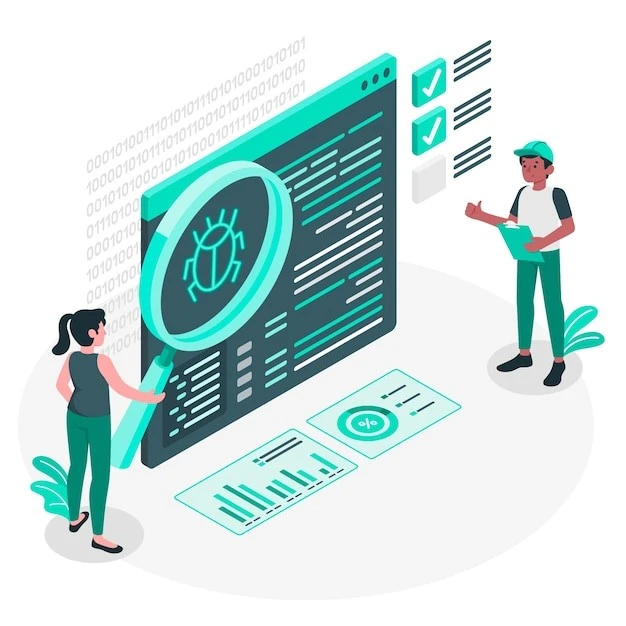Table of Content
Discover the Product Teams Structure and the People That Make it a Success
In recent years, there has been a boom in software products developed and released into the market. Some have failed to make the desired impact, while others have exceeded expectations. Looking at the data, we can see that some organizations have products with a history of seeing success. The question however, is what ensures this successful product development and popularity, time after time.
Those who work with or in the software development industry may have often heard terms like project manager and product owner. However, the vast majority of those people have no idea what these terms mean. However, in order to develop and launch a successful product, knowing and understanding these terms and more is very important.
In this article, we will discover the concept and need for a product team, as well as the different people that make up a successful product. We will also learn how and why some of the top custom software development services providers are adopting the product team formula over the traditional way.
Product Team – What is it?

In its simplest terms, a product team is a group of people who are assigned specific roles designed to help them work together to develop a product. Covering a variety of angles, from design and development, to marketing and management, these roles are defined and created to ensure that the product being developed has a high chance of success.
Generally, just like in a project team, there is no defined hierarchy. That is because unlike the traditional way of working, each member of the product team here has something unique to offer to the process. However, that does not mean that they do not report to anyone. The product manager is the one who has the ultimate ownership of the product and its development process, and therefore all other product team members report to them as per their role’s domain.
As we mentioned earlier, the product team is responsible for more than just developing the product. They deal with product launch and marketing as well. That means that from ideation of the product to marketing it to the target market post-launch, the product team contains people that cover all these aspects. And in order to create and launch a successful product, it is critical that the team works together smoothly like a well-oiled machine.
Defining the Product Team Roles and Their Influence on the Development
We have discussed the duty of the product team as a whole in the life of a successful product. We also mentioned that it is imperative that the members of the team work well together in order to deliver a successful product. But what are these roles exactly? Let’s find out.
Product Designers

Product designers are tasked with more than just designing the product. They are in charge of the entire creative process for that product. It is their job to come up with the initial ideas, and then evolve them using the principles of interface design and UX design basics, to create visually stunning products.
Their design process involves catering to the needs of the end user, the strategic goals of the organization, and the idea whether something is technically possible or not. Their job requirements also involve creating prototypes of the planned product, aiding in assessing and processing user needs, and more.
Product Developers

Product developers are tasked with taking the designers’ ideas, and bringing them to life with their software development skills. Their job requires them to plan the product development, develop it, and test it so that it fulfills the client’s needs.
Most of the time, especially in an agile environment, it also involves planning how the project would be developed, with the developers coordinating with the project manager to plan out the tasks during each sprint’s planning, including the software project requirements. Along with the designers, developers are also quite critical when it comes to evaluating the technical viability of a product or its features, as well as helping out with solving issues and problems that occur throughout the product life cycle.
Project Managers

Technical planning for the product development project is a critical element towards creating a good and successful product. And for that purpose, there is no better person than a project manager. Their job includes discussing with the different stakeholders involved, and trying to understand what guides each of these stakeholders.
Moreover, they are also tasked with identifying potential risks and issues that may arise during the product’s development. They may also create all product plans, as well as technical requisitions and integrations that may be required to make the product functional. Finally, they are tasked with overseeing the application lifecycle development, making changes to the plan as needed when new information appears.
Product Managers

Product managers are considered the de facto leaders of the product team. It is their job to help the team and its members find the most efficient processes and practices to ensure that the job is done well and on time. They also work together with the project managers to plan and execute sprints, track the team’s velocity and burndown, manage retrospectives, prioritize tasks as needed, and more.
In short, their job is to assess and remove any and all obstacles that may impact the product’s development, so that the team faces no hurdles in delivering work on time as per quality standards.
Now, as is the case in agile project management, there may be many teams where the product manager too may be required to perform additional roles as well. Roles that would otherwise be assigned to other resources if available. That may include things like budget creation, forecasting, market research, and more.
Test and QA Specialists

Finally, we have the software testers, also known as the quality assurance specialists, whose job is it is to ensure that the product being created is as per the requirements specified by the client, the needs of the end users, and as per the quality standards of the industry. They ensure that the deliverables developed provide value both to the client, as well as the end users, thus ensuring high-quality product software development every time.
Product Owners (Not on the Team, but Works with Them)

Now, a product owner is generally not part of the product team, but will often work with a team from the client’s side where they will ensure that the relevant stakeholders are aligned together. Basically, the product owner is there to represent the needs and requirements of the client to the product team and other stakeholders.
Business Analysts (Not on the Team, but Works with Them)

A business analyst is also another resource that is not a part of the product team directly, yet is still found working alongside different roles within the team. Their job is to assess and analyze the business processes required to fulfill the client needs based on their organization’s core offering.
Product Team Structure – How is a Successful Product Team Stacked?

Now that we have had a look at the different roles within the product team, the question is – how do they relate to the specific duties of a project team.
Let’s take a look at how these roles fulfill the various requirements of a product team in an organization.
Product Development Management
The first requirement is that of product development management. This requirement is fulfilled by those roles whose job it is to ensure that the product is developed as per the client requirements, user needs, and more.
They are the ones who are responsible for creating a vision for the product, a roadmap to developing it successfully, and any metrics that would dictate if the product is a success or a failure. That means that the job requires good communication and stakeholder management skills, time and deadline management capabilities, as well as the ability to drive multiple resources towards a common goal.
That is why this requirement is fulfilled by the product manager, and aided by the project manager.
User Experience Management
The next requirement for a product team is UX management. While it is important to ensure that the client is satisfied, ensuring the product fulfills the end user’s needs is one of the hallmarks of a good and successful product. This requirement is fulfilled by the product designers, who research the users, design user stories accordingly, and bring to life wireframes and mockups that appeal to the those users.
Product Marketing and Branding
Of course, once the product is developed and launched, it also needs to be marketed to the right end users. The project managers who develop marketing and brand positioning projects to ensure that the developed product is marketed successfully fulfill this requirement. In case the team contains a marketing specialist, then they would be in charge of fulfilling this requirement.
The overall job for anyone fulfilling this requirement is to create the right product demand among the target market, deciding on brand voice, and how the product can be bought to the users successfully.
How and Why You Should Build Your Own Product Team

Now that we have established that a good product team can increase the chances of a product being successful, you might be wondering how you can build your own product team for the organization. Well, we are here to guide you. Keep in mind though that this is just a basic map to how you can start building a product team. Based on individual organizational environment, you can add more resources and roles to the team as needed.
Let’s take a look.
- Get a product manager as the first step towards building a product team. They will help you find the right resources to fill the other roles in the team.
- Aim for a cross-functional product team. It might seem counterproductive to some, but cross-functional teams ensure that there is a healthy flow of ideas so that the product evolves in new and exciting ways.
- Ensure that each member brings something special to the team. It is understood that with a small team, it is important that each member have something to offer, such as experience, knowledge, etc.
- Try to keep the team as small as possible. With agile methodology now popular, it is a core tenet that the fewer the people on the team, the better the chance for success. That is because that the more people there are, the harder it is to manage each individual, as well as their needs and wants.
- Establish a communication plan for all team members. By establishing a clear communication process for all team members, the product manager can ensure that it is easy to manage and monitor communications between all stakeholders.
- Set up collaboration tools for the product team members. This is an extension of the previous tip. By setting up a collaboration tool, you can ensure that the team is able to work well without issues, and that the project status is easy to monitor.
FAQs
| What roles are there in a product team? Some of the most common product team roles include: – Product manager – Product owner (supplementary) – Product designer – Product developer – QA specialist – Marketing and product positioning specialist |
| What are the three types of product teams? The three types of product teams include: Delivery team – Single function development team Feature team – Cross-functional team focused on outputs Product team – Cross-functional team focused on strategic outcomes |
| What is a product squad? A product squad is a small cross-functional team that works independently to work towards strategic goals, with clearly defined and elaborate responsibilities. It is often considered the same as product teams that use the agile approach. |
Find Further Reading:
- Product Development Excellence Explained
- Importance of Product Software Development
- Complete Product Management Process
Conclusion
To sum it up, the importance of a good product team is unquestionable in today’s agile world. However, in order to build a strong team, the organization needs to be aware of the need for different product team roles, as well as thorough knowledge of the product team structure.
Nevertheless, if you want to develop and launch a software product today, building an internal product team should be your first step.
Empower your digital initiatives with BariTechSol, a premier custom software development company. Our skilled team tailors cutting-edge solutions to your unique needs. Elevate your tech experience and stay ahead in the digital realm. Partner with BaritechSol and code the success of your next big idea.


